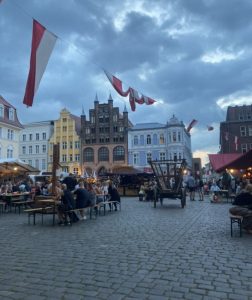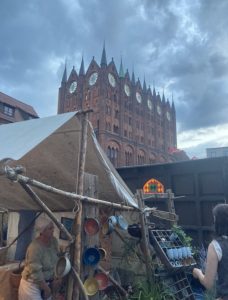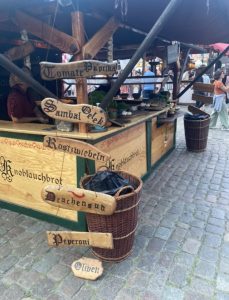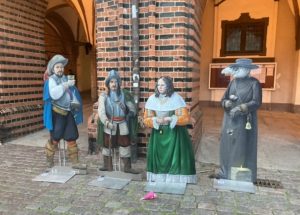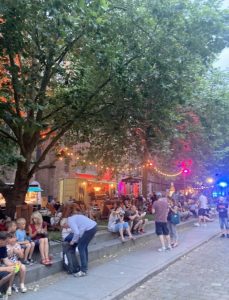Wenzel Eusebius von Wallenstein was a Bohemian politician and military leader who besieged, together with his imperial troops, the historic city of Stralsund during the Thirty Yearsˋ War in 1628. Since then (almost) every year, the inhabitants of Stralsund and its guests celebrate for four days to remember their successful military resistance and victory over his attack with a big party. The traditional party takes place every year on a weekend in the middle or end of July and is also known as Wallensteintage (which in translation means Days of Wallenstein).
During those days the city travels back in time into the Europe of the Thirty Years´ War.
From the old market, which is the heart of the city, the huge fairground spreads to the wide harbor and to the narrow streets of the old town. The odour of pulver dust fills the air and the loud sound of canon thunder can be heard all over the place. The colourful and vibrant hustle and bustle in the streets of the old town reminds of a different time — jugglers throwing their long impressive torches through the air; artists drawing sketchy portraits, for some silver coins, on the streets; merchants haggleing over the price of their precious goods like silver jewellery and needlework; and mystic fortune tellers wanting to read hands in cozy little tents that are covered with old but colourful fabric patches.
Ordinary mercenaries, strict looking guards with long swords and elegant equestrians in uniforms are looking for their ways through the streets and alleys of the town, at the largest historic folk festival of Nothern Germany, while artisans present their skills: blacksmiths are smithing arrowheads over the forge and forming them with a few powerful hammer blows on the anvil, weavers processing sheep whool on a large wooden loom and ceramists drawing filigree natural floral designs with thin paintbrushes and chalky paint on their beautiful pottery.
Taverns provide their services to ensure the physical welfare with food and drinks. Ice cold beer that is served in a cow horn and bottles of traditional honey wine can be enjoyed as well as hearty knuckles of pork with sauerkraut, delicious garlic bread fresh from the hot stone baking oven and mysterious dragon brew made of secret ingredients.
In the evenings, the atmosphere gets lively with dance music from drums, flutes and traditional bag pipes provided until late in the night.
The absolute highlight of the folk fair is the historical pageant which leads through the old town. Many people, dressed up in historical costumes, designed with special attention to detail, are celebrating the victory over Wallenstein. Especially, the scary and gruesome after dawn part of the spectacle, the Pestumzug (plaque parade), points out the shudder of the black death that has threatened the country during the time of the Thirty Yearsˋ War. Pain-twisted faces, hands and arms covered with plaque-spots, hooded men wearing torches, bleak handcarts that are pulled by screaming children, and doctors with tapered pitch black face masks making the atmosphere perfect and letting every observer shiver at this sight — goose pimples preprogrammed.
The crowning final of this colourful fair builds a baroque firework which covers the sky over the town hall square into a place of countless bright colours. This sensational pyro show makes the Wallensteintage an unforgettable event.

